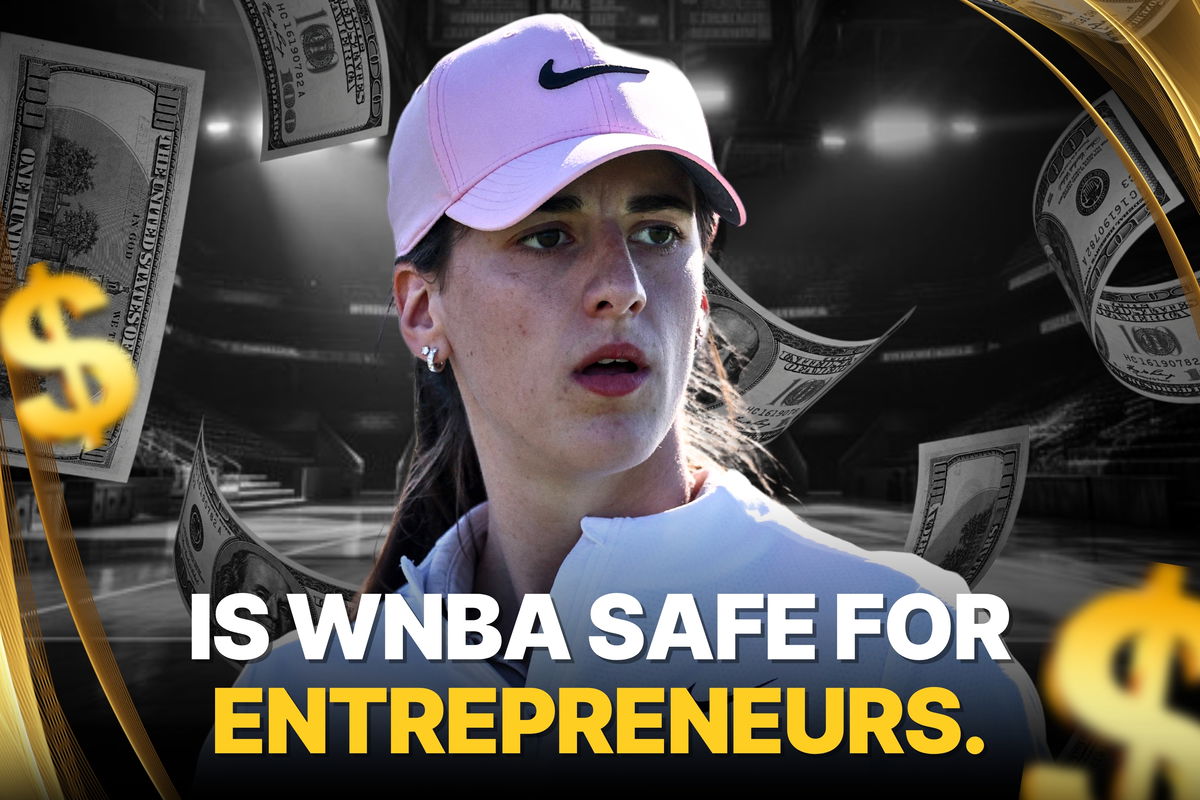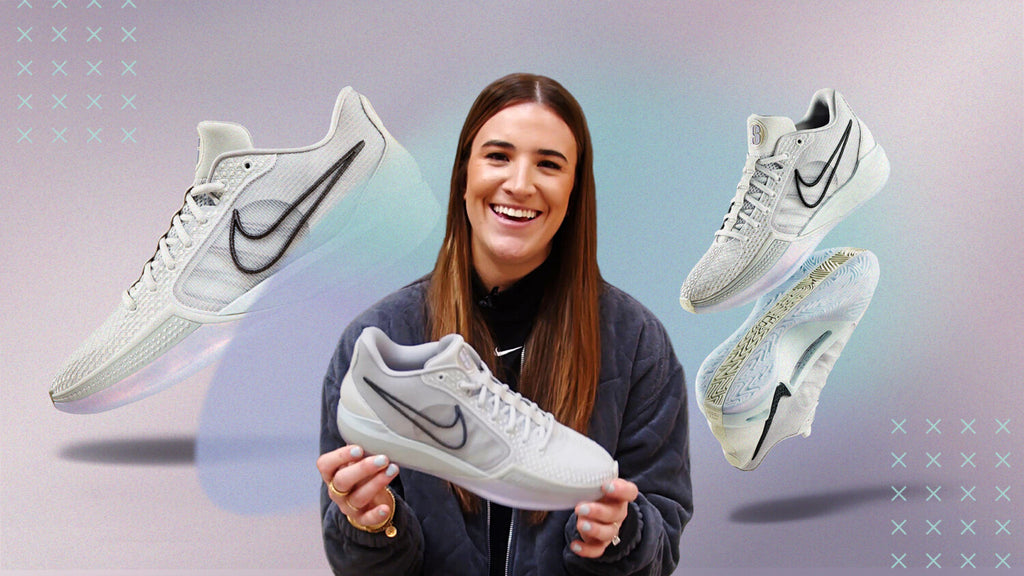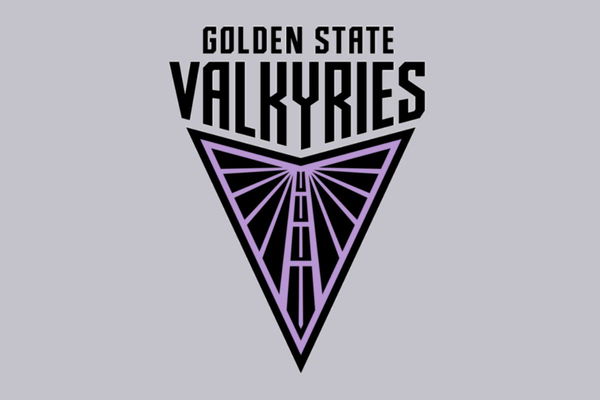

The WNBA is booming, so they say. Record-breaking viewership, top-tier sponsorship deals, and massive investor backing paint a promising picture. This year alone, we’ve seen its name tied to some of the biggest milestones.
Watch What’s Trending Now!
Imagine from staring down an existential crisis in 2020 to raising $75 million in 2022—then in 2024, WNBA Select cards flew off Panini’s site in just three minutes at $874 per box (a 500% price jump from last year). No doubt, it’s being labeled as the ‘fastest-growing brand of 2024.’ But…hear this, $40 million in losses isn’t pocket change. So, is investing in WNBA a golden ticket for entrepreneurs or just a risky gamble?
ADVERTISEMENT
The WNBA’s Financial Revolution
The WNBA is thriving like never before. Despite challenges with profitability, the league’s future looks promising, thanks to new media deals, expanded game schedules, and a growing cultural presence. Here’s what’s set to change:
Revenue Growth and Profitability Challenges
To begin with, WNBA’s revenue depends on three key components:
ADVERTISEMENT
- Ticket Sales
- Sponsorship
- Media rights
Since 2019, WNBA revenue has doubled, climbing from $102M to $200M. Yet, the league still faces financial hurdles, reporting a $40M loss this season. However, it’s still an improvement from the $50M initially projected.
ADVERTISEMENT
Milestones
The league’s profitability largely hinges on its media rights, and the year 2024 saw W pulling the best numbers in its history.
Top Stories
Cam Newton Makes NFL Return Conditions Clear to 32 Teams as Panthers Legend Confirms Retirement Stance

Tom Brady Makes Career Announcement for Vegas as Pete Carroll Addresses Losing Raiders Locker Room

Scottie Scheffler Makes Critical Health Announcement After He Ended PGA Tour Hiatus

J. J. McCarthy Awaits Punishment From Vikings After Rejecting Kevin O’Connell’s Instructions

Tiger Woods & Co. Now Have to Think Twice Before Trash-Talking at TGL Following New Update

Lexi Thompson Branded ‘Self-Centered’ After Retirement Decision Led to Chaos & Confusion

- Nationally televised games averaged 657,000 viewers, the highest in 24 years.
- ESPN saw a 170% year-over-year viewership jump, averaging 1.19M viewers.
- CBS averaged 1.1M viewers, an 86% increase.
- Scripps Sports ION saw 133% growth, averaging 670,000 viewers.
- NBA TV more than quadrupled its audience, with its top game hitting 678,000 viewers.
ADVERTISEMENT
Altogether, 54 million unique viewers tuned in, while in-person attendance rose double digits for all 12 franchises.
Challenges
- Teams in smaller markets: Teams like LV Aces (population 18,080, DMA rank #32) face limited fanbases, with an average attendance of 6,244
- Ticket Prices: WNBA’s most expensive seats range from $300-$500, while NBA game tickets average $2,875
- Structural (Financial) Challenges: WNBA players earn lower salaries, often seeking income abroad, limiting marketing opportunities. Ownership is fragmented, with the NBA holding 60% and WNBA owners only 25%, while the league incurs $10M annual losses. Expansion fees, like the $50M Valkyries fee, don’t benefit all owners, further straining finances.
- Cultural Bias: Back in the day, legend Lisa Leslie’s Nike deal was reduced due to assumptions about male-driven sales; conditions have improved now, but the audience will still take time to adapt.
ADVERTISEMENT
Now, if you compare the WNBA’s recent progress with its ongoing hurdles, the situation looks like this:
| Aspect | Milestones | Challenges |
| Viewership | 657K avg for national games; ESPN +170% YoY | Small market teams with limited attendance |
| Attendance | Double-digit growth for all teams | Smaller fanbases impact revenue |
| Media Reach | 54M unique viewers across networks | In-person ticket prices remain low |
| Player Focus | Increased recognition for players | Low salaries push athletes to play overseas |
| Ownership | Growing external capital interest | NBA holds 60%, limited team control at 25% |
| Profitability | High potential with media rights expansion | Consistent annual losses |
| Expansion | New teams adding visibility | Fees do not support all team owners equally |
ADVERTISEMENT
WNBA Media Entering A New Era of National Exposure
You might wonder where this sudden increase will come from. The answer lies in the league’s new media rights agreements. The league’s current deal, valued at approximately $60M annually, has been negotiated by the NBA to secure more comprehensive coverage. A new 11-year media deal worth $2.2B will add $100M annually. This could turn today’s losses into a projected $60M profit.
Key Details:
- The deal is valued at $200M annually.
- Over 125 regular-season and playoff games will air yearly across Disney, NBC, and Amazon Prime. Over 11 years, Disney will broadcast 8 semifinal series and 5 finals, while NBC and Prime Video will each carry 7 semifinal series and 3 finals.
ADVERTISEMENT
Advertising and Expansion
- The number of sponsors jumped 60% lately, nearing 150 brands across automotive, insurance, and tech categories.
- Disney reports a 641% increase in WNBA ad revenue since 2022, with 85% of its 2025 commercial inventory already sold.
- Meanwhile, merchandise sales have skyrocketed, up 500% in the first half of 2024
ADVERTISEMENT
Betting on Women’s Basketball: Brands Thriving with the WNBA
Nike
- Nike has been a steadfast marketing partner of the WNBA since its inception in 1997.
- Brand’s previous eight-year deal was valued at $1B. In 2022, Nike also contributed to the league’s $75M capital raise, its largest ever.
- Nike became the official WNBA uniform partner, debuting a uniform system for all 12 teams.
- The Sabrina 1 (2023) was a historic launch. This signature shoe became the most successful in women’s basketball history, dominating sales in North America and China.
- Nike’s extended partnership with the WNBA in 2024. The deal aims to counter a sales slowdown and save $2 billion over the next three years
Why This Could Pose Long-Term Risks:
- Dependence on One Major Partner: This underscores the WNBA’s reliance on external funds. This dependency could hinder diversification and make the league vulnerable to shifts in Nike’s strategy.
- Sales Slowdown Concerns: Nike’s 2024 partnership extension is designed to offset slowing sales and save $2 billion, challenging long-term revenue projections
- Risk of Market Saturation: Nike’s heavy investment in the WNBA could stifle competition from other brands, limiting the league’s ability to attract diverse sponsorships.

CarMax
- After joining hands in 2020, CarMax’s early ads featuring Sue Bird went viral in 2021.
- In 2022, the brand added WNBA teams like the New York Liberty, Phoenix Mercury, and Washington Mystics.
- CarMax joined the WNBA’s Changemakers program, providing brand partnership training to athletes.
- The brand studies show significant growth in brand lift from its women’s sports sponsorships, with a 20% higher lift from the WNBA.
Why This Could Pose Long-Term Risks:
- Overextension Across Multiple Partnerships: CarMax’s involvement in both the NBA and WNBA, alongside initiatives like the “Call Your Shot” campaign and community projects, risks diluting its focus and marketing resources
- Uncertain ROI: Expanding to national-level partnerships increases exposure, but the substantial investment required may result in diminishing returns.
- Audience Misalignment: CarMax’s campaigns, like “Call Your Shot,” often feature both NBA and WNBA players, which could dilute messaging and fail to resonate deeply with the WNBA’s target audience, limiting the partnership’s effectiveness for league growth.
State Farm
- State Farm and W’s association dates back to 2013, starting with the WNBA Draft sponsorship.
- In 2022, Caitlin Clark became the first collegiate and female athlete to join State Farm’s Team State Farm roster.
- The company also served as the title sponsor for the 2023 WNBA season, marking a shift to Scripps Sports airing the games on ION.
Why This Could Pose Long-Term Risks:
- Brand Exclusivity May Limit Sponsorship Opportunities: State Farm’s significant involvement as a sponsor and presenting partner for multiple WNBA events may stifle competition for sponsorship deals and limit revenue diversification.
- Fluctuating Athlete Performance: State Farm is heavily investing in individual athletes. If these athletes experience injuries, decline in performance, or fail to maintain their star status, the brand alignment with them might lose its impact.
- Perception of “Token” Sponsorship: Some critics may view State Farm’s sponsorship as a “token” gesture to appear socially responsible. Such perceptions could undermine its credibility and authenticity, potentially damaging its brand image and finances.
So, all in all, while major sponsors like AT&T, Snapchat, Google, Deloitte, Puma, Adidas, Delta Air Lines, and DoorDash play a crucial role in financial backing, they also contribute to a central challenge: the league’s heavy reliance on external funding. This reliance on sponsorships and partnerships may create vulnerabilities, as the league’s financial stability is tied to the continued investment and interest from these corporate entities.
If any of these sponsors reduce their support or shift focus elsewhere, the league could face challenges in maintaining its operations and growth trajectory. However, this does not mean that the WNBA cannot still potentially achieve great success.
Why Entrepreneurs Should Look to the WNBA for Big Wins?
Well, investing in the WNBA makes a lot of sense if you’re looking to tap into a seriously underserved market. Did you know that female consumers influence a massive 85% of U.S. spending? What’s more, female sports fans are particularly engaged—they’re not only likely to support teams but also actively engage with teams on social media and with sponsors.
In fact, female athletes are pulling in twice as much fan engagement as male athletes. Plus, fans of women’s teams tend to be younger and more affluent, giving sponsors access to an eager, high-value audience.
Next up, if you’re looking for proof regarding ROI. Take New York Liberty, for instance. When Joe and Clara Tsai bought the team for $15 million, they averaged just 2,239 fans per game. Fast forward to today, and they’re pulling in over 12,000 fans per game. That’s an incredible 400% increase in fan attendance. Plus, the Liberty is now valued at $200 million.

Even entrepreneur Joe Pompliano called this “A d-n good ROI right there.” Along with this, the visibility of women’s sports is on the rise. In 2022, coverage of women’s sports jumped from just 4% to 16% of all sports coverage, with projections to hit 20% soon. Then, in 2024, the league racked up a record $136 million in sponsor media value, with major companies like Nike, AT&T, and Michelob Ultra leading the charge.
Social media is a big part of this. Teams like the Indiana Fever saw their social media following grow by 356% year-on-year. On top of all that, the league is also embracing cutting-edge technology.
For example, the league recently partnered with Second Spectrum to bring 3D tracking data to every game, making the WNBA the first women’s professional sports league in the U.S. to use this tech. One of its sponsors, Deloitte, is also helping the league enhance its app, offering fans personalized experiences and live streaming.
A Slam Dunk or a Missed Opportunity? The Risks Entrepreneurs Face
When you look at the WNBA today, you might see a lot of potential, but there are still some serious hurdles to clear before it can truly compete with male-dominated leagues. First things first, revenue generation.
- The NBA made $10 billion in 2021, while the WNBA only brought in about $180-$200 million
It all comes down to audience size. NBA Finals drew 11.3 million viewers in 2024, whereas the WNBA postseason saw just 470,000. The NBA draws in nearly 30% of Americans regularly, while the WNBA is still working hard to grow that fanbase.
Moreover, despite the noise, their losses are still in the red, and players this year have opted out of the current CBA, which puts pressure on the WNBA to meet player demands, focusing on:
- Better wages to reflect the league’s growth
- Improvement in game and practice facilities
- Including pregnancy, family planning, and retirement benefits
This opt-out creates urgency for the league to negotiate and finalize a new deal and to continue growing the league’s success all at once. Then, we also see gender biases in the picture. We know that basketball, in particular, has been historically seen as a male-dominated, high-energy game. People often assume that women can’t bring the same level of athleticism or intensity.
Although these girls enjoy a lot of attention during the NCAA days, they usually don’t transition to the pros. As WNBA legend Sue Bird mentioned, “Society loves to give young girls opportunities and support them, but when they become women, it feels a little less supported.” This bias is slow to change, and it can take up to ‘n’ number of years.
And as Thayer Lavielle, managing director of Wasserman’s The Collective, a women’s advocacy and advisory group says, “There wouldn’t be the interest and investment from a lot of these massive investors and organizations if it were a moment in time. You wouldn’t have people putting money into women’s sports who expect to get returns, it’s not a community project.” But can future additions can turn things around?
Two of the most important future developments: Expansion and the CBA
Yes, expansion is in the works, and it’s been a hot topic. But while it seems like a step forward, there’s a lot more to consider. The reality is, paying for a new team isn’t exactly that easy. For example, Golden State Warriors owner Joe Lacob forked out $50 million over 10 years for a WNBA team, while Toronto Raptors minority owner Larry Tanenbaum dropped $115 million for a new team and practice facility.
And that investment doesn’t come without risk:
- Economic Slowdowns: If the economy is downturned, it could hit the sports industry hard.
- Fan Sentiment: More teams mean more competition for fans. And if the league doesn’t do a good job of fostering loyalty and excitement in the new markets, fan sentiment could take a hit.
- Mismanagement: Expanding too fast or without careful planning could lead to mismanagement. Teams might struggle to get the right staff, facilities, or talent, which could lead to poor performance and financial losses.
- Saturation: Too many teams, too quickly, could result in a watered-down product.
- Higher Costs and Salaries: With new teams come higher costs, such as paying players and staff, not to mention the risk of the salary cap going up if the league lands a better CBA.
What Happens when new teams meet new agreements?
The WNBA’s collective bargaining agreement (CBA) is a big part of the equation, especially with the league looking to expand. The real challenge comes when you factor in that 2026 is also the first season of a potential new CBA and TV deal. This could cause the salary cap to rise dramatically.
So, teams might have to deal with more financial strain just when they’re trying to bring in new teams. And if the salary cap goes up, a lot of veteran players are gonna want higher pay, which could complicate things further for teams looking to build their rosters.
A Future Worth Betting On?
The league is going to see some exciting changes and expansion. Golden State Valkyries, the league’s 13th team, is already here, followed by the introduction of Toronto Tempo as the first international franchise by 2026. By 2028, the league aims to reach 16 teams, with Portland also on the list. But despite the challenges, how will it help the W grow?
- More roster spots, More opportunities
- Global market expansion
- Increased revenue streams

The financial outlook is also bright, with a $2.2 billion media rights deal set to kick off in 2025. This deal is expected to quadruple the league’s revenue. As for the players, the introduction of NIL (Name, Image, and Likeness) deals in college sports has already shown that athletes can leverage their personal brands before entering professional leagues.
The WNBA could see more player-driven sponsorships and collaborations in the future. This, in turn, would raise the profile of both individual players and the league as a whole. Culturally, the rise of stars like Caitlin Clark and Angel Reese is helping to form deeper connections with fans.
Willow Bay, a pioneering journalist who covered the WNBA’s early days, shared, “What’s going on now feels different, more powerful, and more fan-driven.” The WNBA is entering a transformative era with potential risks. But seems like NBA stars are up to bet on it. After all, they understand that their own league also took 50 years to find its footing.
Inside the Investment Boom: Big Names Betting, Experts Backing, and Risks Looming
The three-time NBA champion Dwyane Wade joined the ownership group of the Chicago Sky. “We all talk about support, and support looks different for everyone,” Wade told ESPN. “Instead of just tweeting ‘Go support the W’ or showing up at games, I wanted to take it to the next level.”
Wade believes in the league’s potential, saying, “Growth is going to happen, and I want to be part of it.” His investment still needs final approval from the WNBA board of governors, but this move mirrors a growing trend of high-profile investors—like Tom Brady (Las Vegas Aces) and Magic Johnson (partial owner of the LA Sparks)—betting on the WNBA.
View this post on Instagram
Meanwhile, expert Lavielle shared his insights, stating, “Women’s sports are seeing a marked increase in investment today due to a confluence of factors.” Even a recent study by The Collective and RBC projects the combined value of WNBA and NWSL teams will grow from $2.6 billion to $4.3 billion in just three years.
Historically, women’s sports haven’t been valued the same way as men’s. Lavielle puts it bluntly: “We needed a new blueprint for how to value women’s sports. We can’t hold them to the same methodology as men’s sports because they’ve had fewer resources, less infrastructure, and smaller investments.”
But now? Things are shifting. With big names buying in, media rights deals kicking off, and franchise values climbing, the league is poised for explosive growth.
The Final Verdict: Is It Safe?
They say every great success story begins with someone taking a leap of faith. And that’s exactly where the WNBA finds itself today. The buzz is real. High-profile investors jumping in, expansion teams on the horizon, and franchise valuations climbing fast, but is it foolproof? Not quite.
Hence, entrepreneurs should view the WNBA’s expansion and growth potential as a unique opportunity within the sports market. However, with the current economic landscape marked by inflationary pressures, market volatility, and shifting consumer spending habits, it’s important to approach this opportunity with a calculated strategy.
While the WNBA’s rising franchise valuations and high-profile investments are promising, it’s essential to balance the league’s cultural momentum with the financial risks. The rapid growth in media rights deals and sponsorships, such as the recent Nike and Red Bull partnerships, highlights the league’s increasing commercial appeal. However, with the potential for economic slowdowns or market saturation, investors must consider long-term sustainability over short-term gains.
Additionally, the complexities of the WNBA’s CBA could impact team valuations and operational costs. A well-rounded investment strategy would involve deeply understanding the league’s financial dynamics, from the expansion draft process to projected TV deal revenue.
Entrepreneurs must enter the market with clear contingency plans and robust market research. Those who align their investments while remaining mindful of external economic factors will be best positioned to succeed in this evolving market. So, what are your insights or takeaways? Let us know in the comments below!
ADVERTISEMENT
ADVERTISEMENT
ADVERTISEMENT

